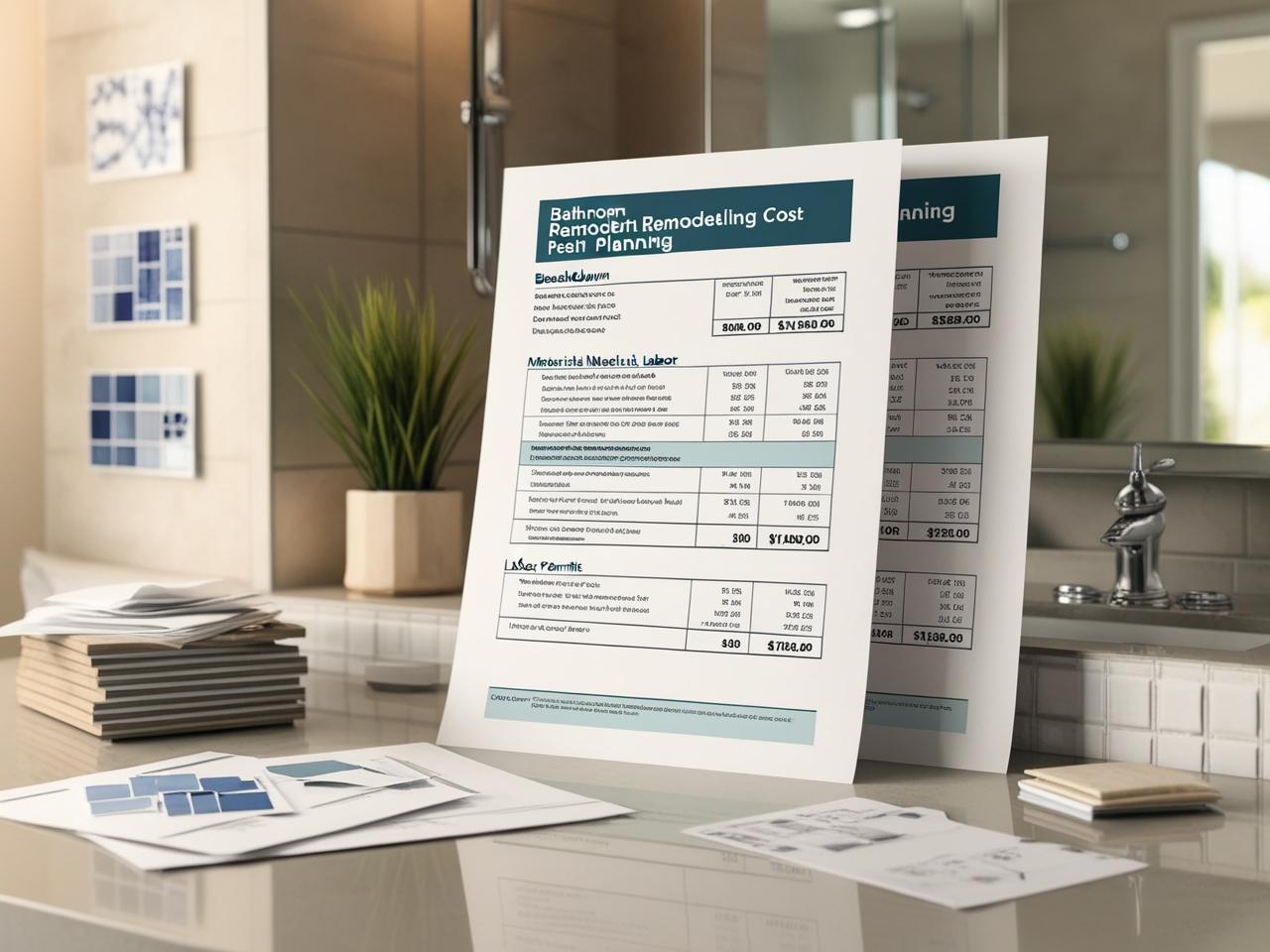Summary: Dreaming of a spa-like bathroom retreat? This guide breaks down the essential steps to planning a successful remodel, from setting a budget to choosing the perfect fixtures.
1. Defining Your Vision & Needs:
Before you even think about demolition, take time to define your needs and wants. Consider who uses the bathroom, what challenges you face with the current layout, and what you hope to achieve with the renovation. Do you need more storage? Is accessibility a concern? Are you simply looking for a style refresh? Creating a mood board with images from magazines and online platforms can help you visualize your dream bathroom and communicate your vision to designers and contractors. Think about the overall aesthetic you're aiming for – modern, traditional, minimalist, etc. – and how it will complement the rest of your home.
2. Setting a Realistic Budget:
Bathroom remodels can range from budget-friendly refreshes to full-scale overhauls. It's crucial to establish a realistic budget early on and stick to it. Research the average costs for materials, labor, and permits in your area. Be prepared for unexpected expenses and build in a contingency fund of at least 10-20% of your total budget. Prioritize your spending by identifying the elements that are most important to you. For example, if a luxurious soaking tub is a must-have, you might need to compromise on other areas, such as the type of tile or vanity.
3. Navigating the Design Process:
Whether you choose to work with a professional designer or tackle the design yourself, careful planning is key. Consider the layout of your bathroom and how you can optimize the space for functionality and flow. Think about the placement of fixtures, the size and style of your shower or tub, and the storage solutions you'll need. If you're changing the plumbing layout, consult with a plumber to ensure it's feasible and meets code requirements. Don't forget about ventilation – proper ventilation is essential to prevent mold and mildew growth.
4. Choosing the Right Professionals:
For most bathroom remodels, you'll need to hire a team of professionals, including a plumber, electrician, and contractor. Do your research and get quotes from multiple contractors before making a decision. Check their licenses and insurance, and ask for references from previous clients. A good contractor will be able to manage the project efficiently, communicate effectively, and ensure that the work is completed to a high standard. Clear communication is essential throughout the entire process to avoid misunderstandings and delays.
5. The Execution and Aftermath:
Once you've finalized the design and hired your team, it's time to start the demolition and construction. Be prepared for some disruption to your daily routine, as you may be without a functioning bathroom for several weeks. Regularly check in with your contractor to monitor progress and address any concerns. Once the remodel is complete, take the time to inspect the work and ensure everything meets your expectations. Enjoy your newly renovated bathroom!






-NRn5h3KpkwFhk3rdmqCGNdU4454WoO.jpg&w=3840&q=75&dpl=dpl_GQLBjRZxFpmXKKuDxvyS3JRoK3Y9)

-wW9WMat4GrYUDpt7khKPrDJJb2C3b7.jpg&w=3840&q=75&dpl=dpl_GQLBjRZxFpmXKKuDxvyS3JRoK3Y9)

-mc2l8YkluXHrARFpF50XqzBfhWI8Ly.jpg&w=3840&q=75&dpl=dpl_GQLBjRZxFpmXKKuDxvyS3JRoK3Y9)


-WZPBKzuLHzCgfaMJ9wRLmMFyKv8kB8.jpg&w=3840&q=75&dpl=dpl_GQLBjRZxFpmXKKuDxvyS3JRoK3Y9)

-bj28viAB8hpn8uCKX8wuNyjVpYd2E2.jpg&w=3840&q=75&dpl=dpl_GQLBjRZxFpmXKKuDxvyS3JRoK3Y9)
